Lean construction is a new way to design and build. Lean theory, principles, techniques, and practices, taken together, are the foundation for a new form of project management. From its roots in production management, lean construction has produced significant improvements, particularly on complex, uncertain and quick projects.
The Key differences between Lean Construction and conventional methods for project management are:
Control is redefined from “monitoring results” to making things happen. Planning system and project management performance is measured and improved to assure reliable workflow and predictable project outcomes. Controlling project variations and dependencies allows for maximum output of work flow.
Performance is maximizing value and minimizing waste at the project level by increasing communication and collaboration. Current practice attempts to optimize each activity and thus reduces total performance.
Coordinating action through pulling and continuous flow as opposed to the traditional task-focused schedule driven push system with over-reliance on central authority and project schedules to manage resources and coordinate work. Decentralizing decision making through transparency and empowerment. This means providing (all) project participants with information on the state of the project, and production systems, and empowering them to take action.
Value to the customer is defined, created, and delivered through out the life of the project. In current practice, the owner is expected to completely define requirements at the beginning for delivery at the end, no matter how many changes in conditions, market, technology, and business practices.
Why do Projects on a Lean Basis?
The simple answer is; it will cost less, get done earlier, have far fewer injuries, and better quality. The better and more powerful answer is- less suffering for the customer and project team, greater accountability, forward looking controls (steering really), increased ability to cope with uncertainty and complexity, and the ability to deliver more value to more people as the project unfolds. Sound to good to be true doesn’t it, well it is too good to be true for those stuck in current practice.
What is a Project?
A project is a promise – a very big promise – delivered by a select group of people (the project team) working in a network (the project itself) of commitments. The beginning actions of design creates the conditions of satisfaction that sets the ball rolling toward delivery on that promise. During construction, the physical work, movement, and shaping and installation of materials delivers on many promises made in planning as people organize to do their work. When people make reliable promises and do what they say, others in the network of commitments are free to move forward on their promises resulting in a greater condition of trust and predictable workflow. When downstream planners can count on work being ready, crews can work closer together without sacrificing productivity. Project duration is reduced, productivity goes up, and the site is safer.
A Lean approach is achieved by involving project performers – people responsible for delivering on their promises – in planning the work they will perform. It occurs through successive levels of planning starting with the initial promises of the project to daily and weekly planning, where the details of what will be done and by whom and when specifically are promised. The lean approach exploits and facilitates learning throughout the process. Planning continues throughout the project for refining, learning, innovating, and adjusting to the future as it unfolds.
Control is redefined when the work of Project Management is understood as making and keeping commitments. By control, we mean the ability to make things happen as intended and planned. Accountability arises when and only when a person makes a promise to deliver. Accountability vanishes on a project when performers don’t have the freedom to say “No, I can’t get it done by that time”. New possibilities open up as the flow of work becomes more predictable. Perhaps the largest benefit predictable workflow brings is closer coordination in the midst of greater complexity. We observe in nature that at the cellular level predictability increases along with complexity in order for the organism to survive.
Your Next Steps
My mission is to demonstrate that a business embracing practices of kindness, respect and empowerment will be very, very successful and profitable.
Ready for a new level of success in your business?
Working with hundreds of companies in over 8,000 meetings for 25 years has shown me if you take the right actions, you will get the best results. The GNA program helps you break free from the exhausting effort to run your business. We offer a step-by-step program helping you to thrive and build the business you always wanted.
Explore how you can achieve a new level of success in your company, schedule time with me today: https://calendly.com/greg-479/free-30-min-discovery


